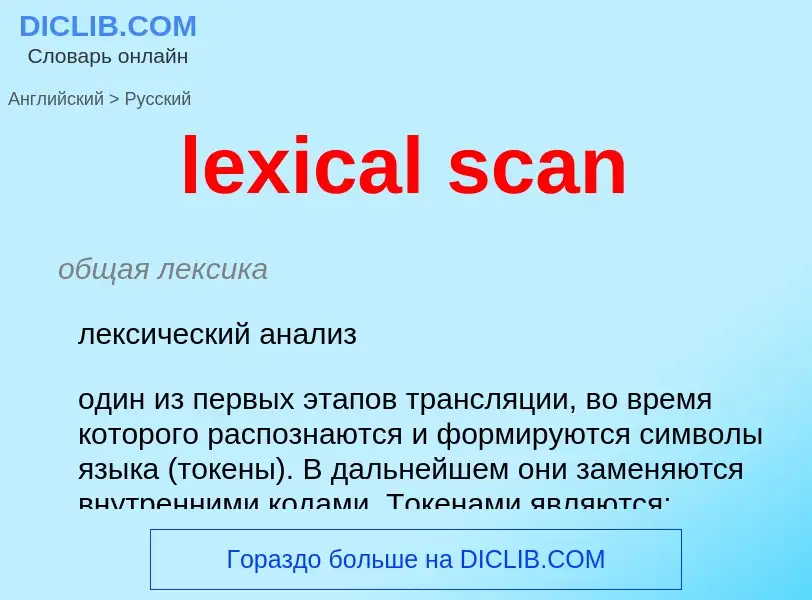Перевод и анализ слов искусственным интеллектом ChatGPT
На этой странице Вы можете получить подробный анализ слова или словосочетания, произведенный с помощью лучшей на сегодняшний день технологии искусственного интеллекта:
- как употребляется слово
- частота употребления
- используется оно чаще в устной или письменной речи
- варианты перевода слова
- примеры употребления (несколько фраз с переводом)
- этимология
lexical scan - перевод на Английский
общая лексика
лексический анализ
один из первых этапов трансляции, во время которого распознаются и формируются символы языка (токены). В дальнейшем они заменяются внутренними кодами. Токенами являются: ключевые слова языка, идентификаторы, литералы и знаки операций. На этом этапе удаляются комментарии и любые символы, не имеющие значения для следующих фаз анализа. Для создания лексических анализаторов имеется множество инструментальных средств
Смотрите также
Определение
Википедия
Lexical semantics (also known as lexicosemantics), as a subfield of linguistic semantics, is the study of word meanings. It includes the study of how words structure their meaning, how they act in grammar and compositionality, and the relationships between the distinct senses and uses of a word.
The units of analysis in lexical semantics are lexical units which include not only words but also sub-words or sub-units such as affixes and even compound words and phrases. Lexical units include the catalogue of words in a language, the lexicon. Lexical semantics looks at how the meaning of the lexical units correlates with the structure of the language or syntax. This is referred to as syntax-semantics interface.
The study of lexical semantics looks at:
- the classification and decomposition of lexical items
- the differences and similarities in lexical semantic structure cross-linguistically
- the relationship of lexical meaning to sentence meaning and syntax.
Lexical units, also referred to as syntactic atoms, can stand alone such as in the case of root words or parts of compound words or they necessarily attach to other units such as prefixes and suffixes do. The former are called free morphemes and the latter bound morphemes. They fall into a narrow range of meanings (semantic fields) and can combine with each other to generate new denotations.
Cognitive semantics is the linguistic paradigm/framework that since the 1980s has generated the most studies in lexical semantics, introducing innovations like prototype theory, conceptual metaphors, and frame semantics.






